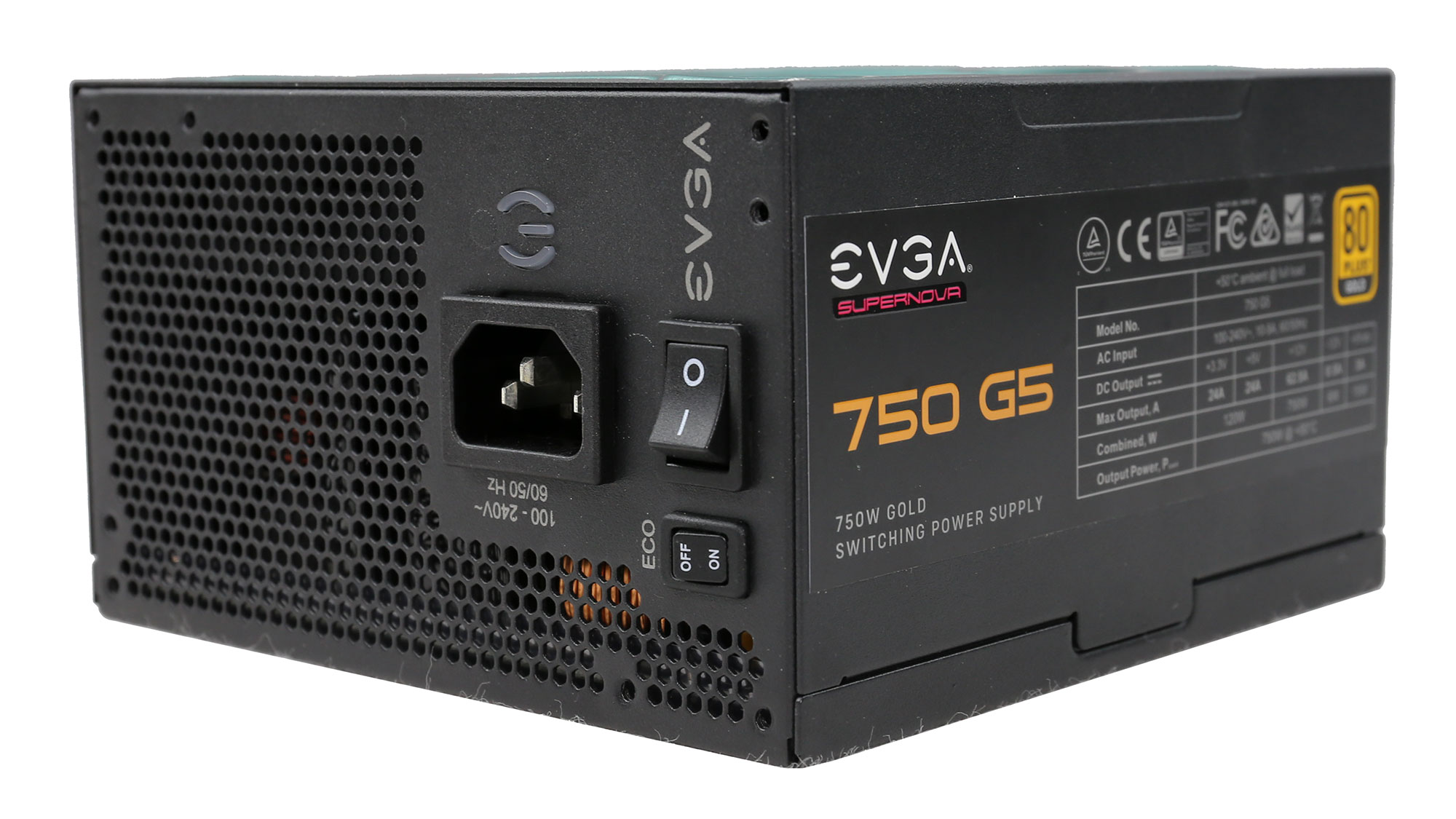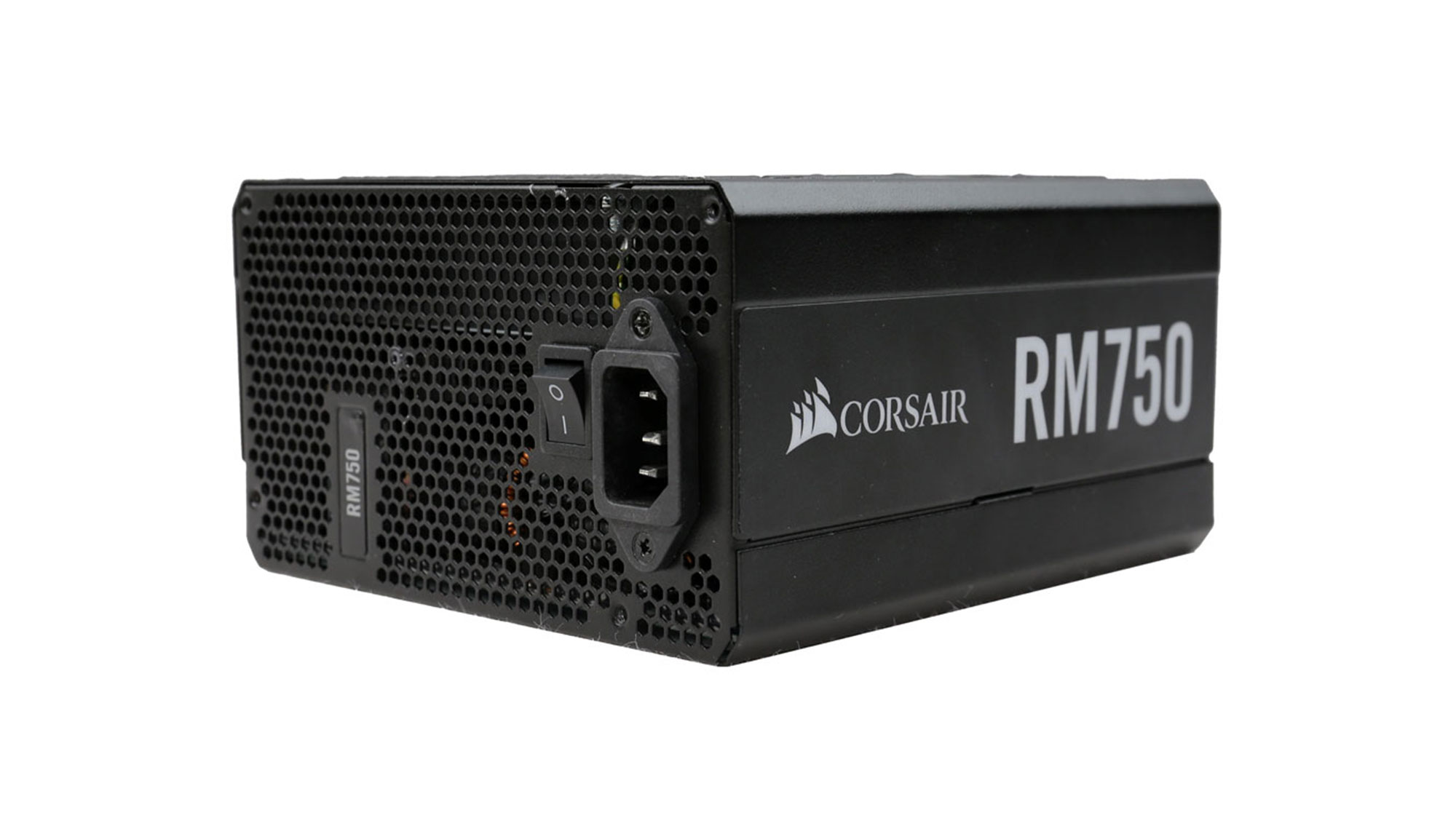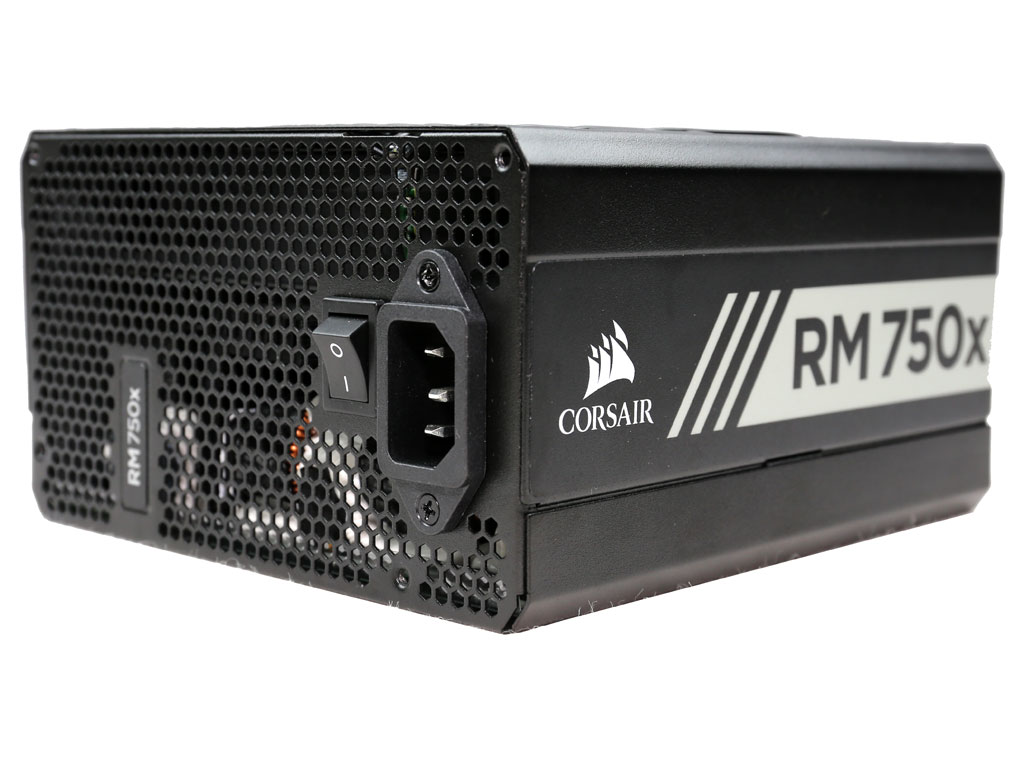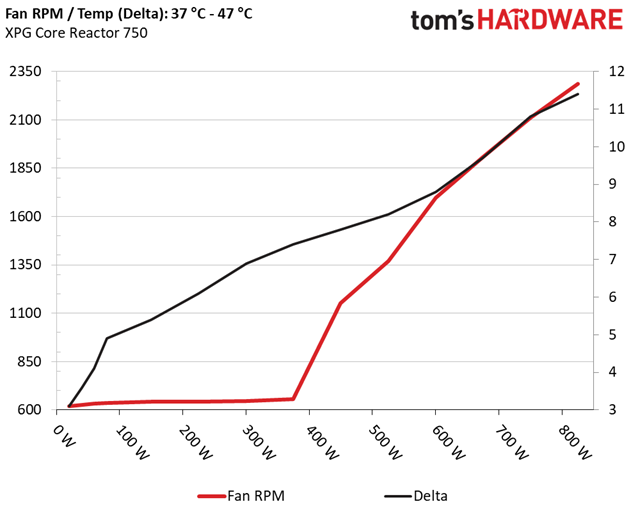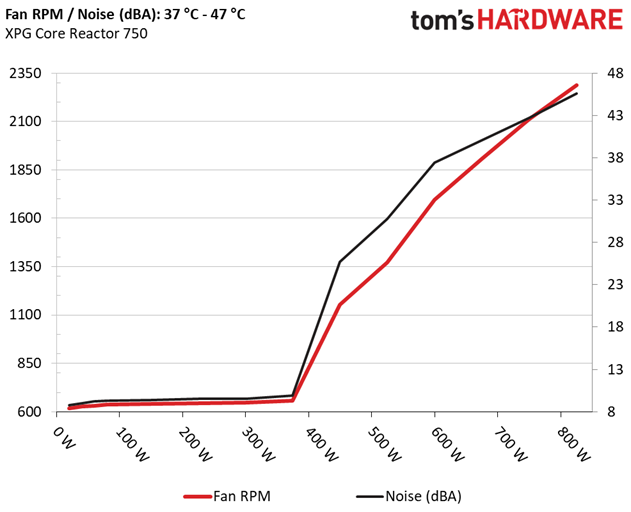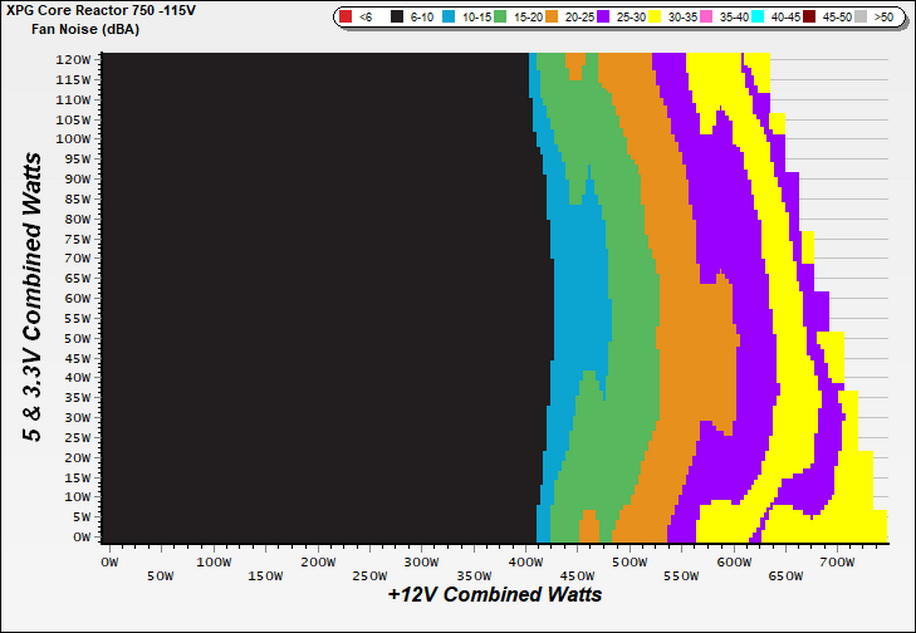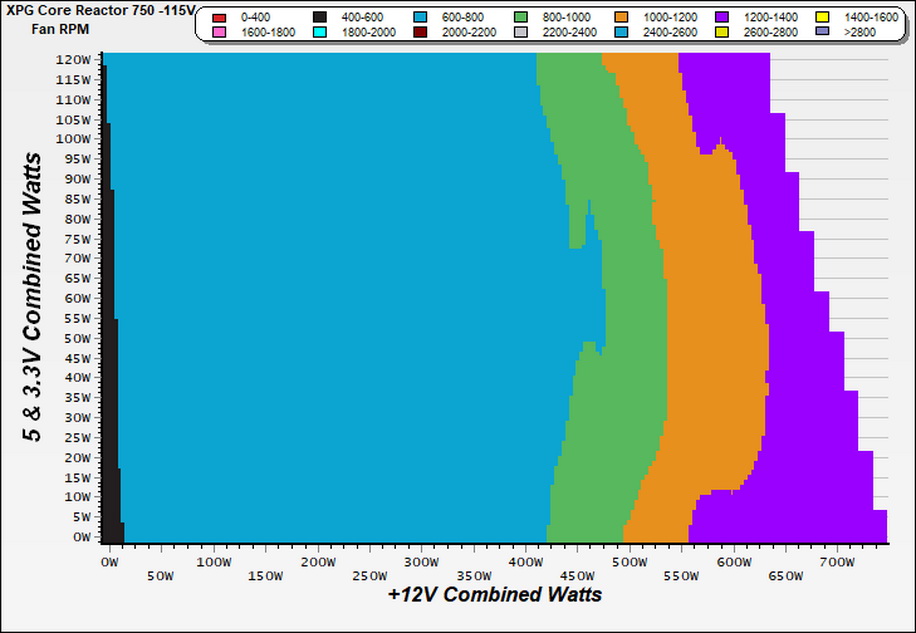Why you can trust Tom's Hardware
To learn more about our PSU tests and methodology, please check out How We Test Power Supply Units.
Primary Rails and 5VSB Load Regulation
The following charts show the main rails' voltage values recorded between a range of 40W up to the PSU's maximum specified load, along with the deviation (in percent). Tight regulation is an important consideration every time we review a power supply because it facilitates constant voltage levels despite varying loads. Tight load regulation also, among other factors, improves the system’s stability, especially under overclocked conditions and, at the same time, it applies less stress to the DC-DC converters that many system components utilize.
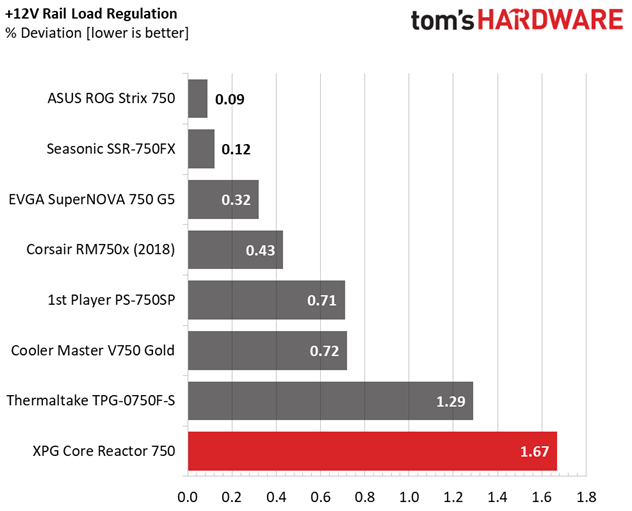
Results 1-8: Load Regulation
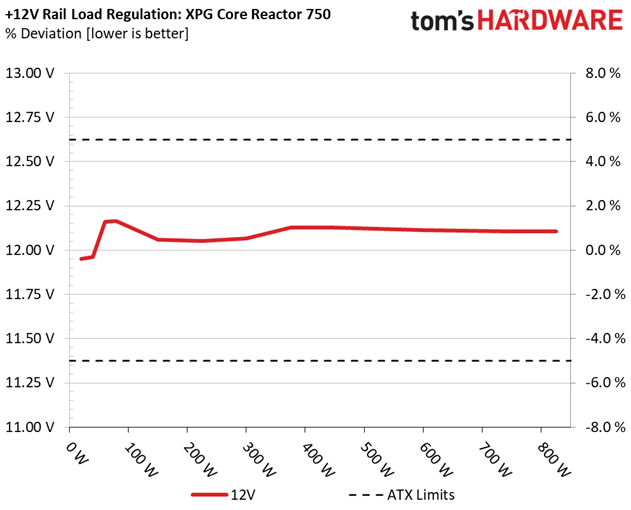
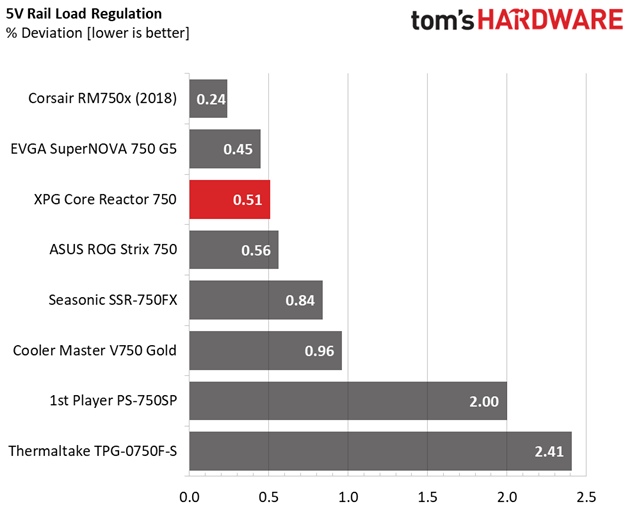
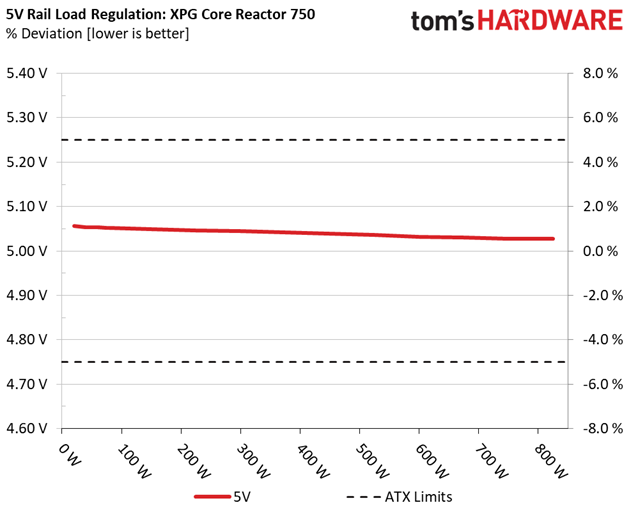
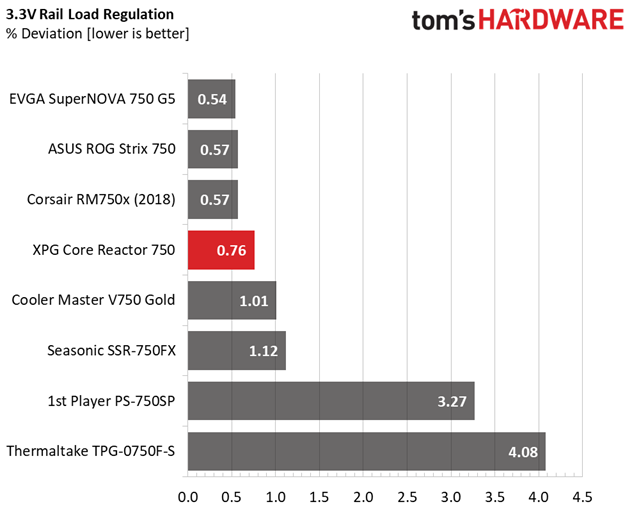
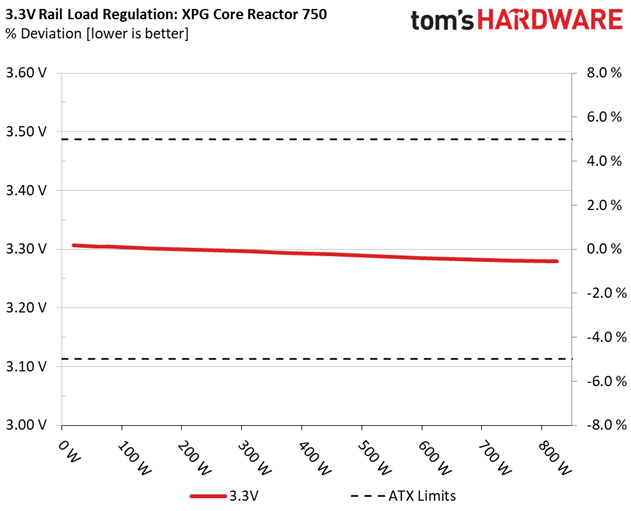
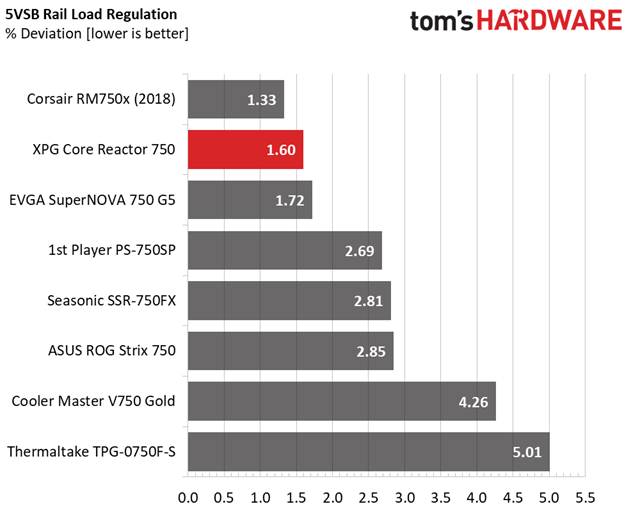
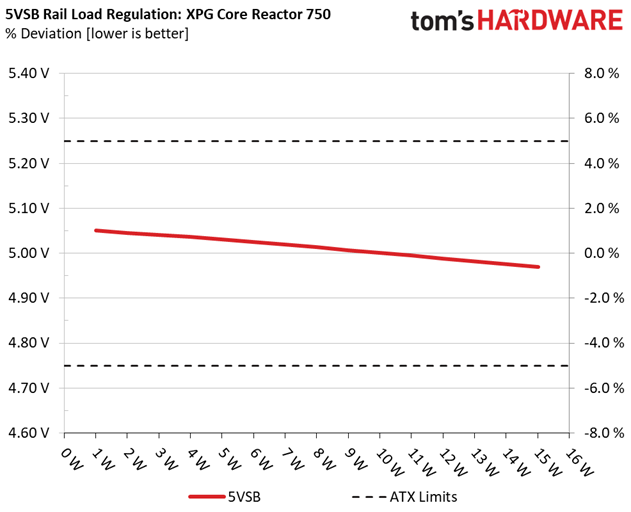
The load regulation at +12V is loose compared to other similar spec units. We expected within 1% deviation on this rail. On the other hand, all minor rails have a tight load regulation.
Hold-Up Time
Put simply; hold-up time is the amount of time that the system can continue to run without shutting down or rebooting during a power interruption.
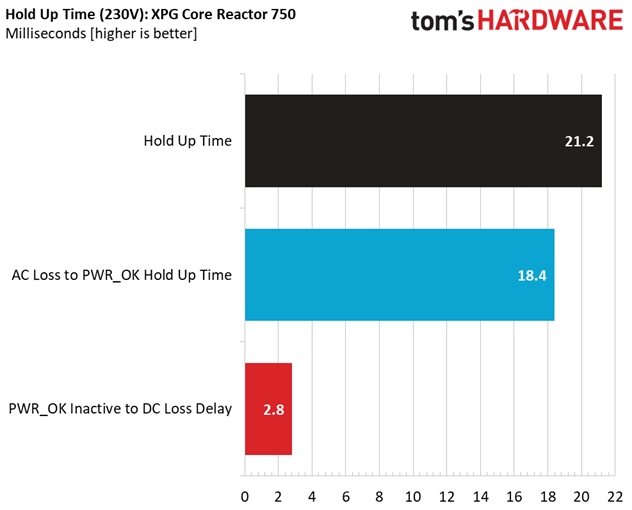
Results 9-12: Hold-Up Time
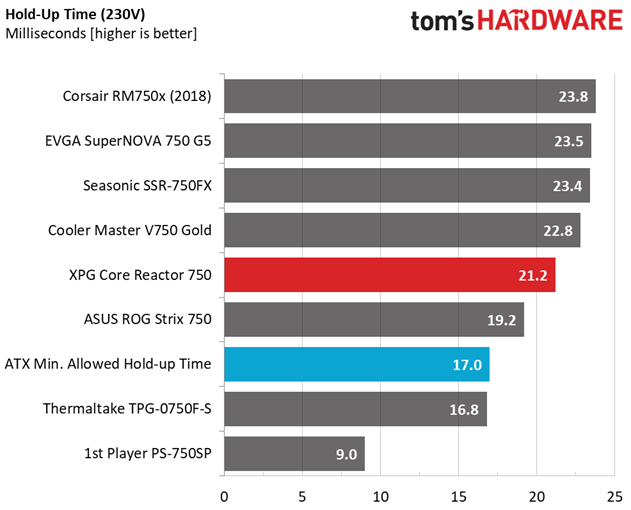
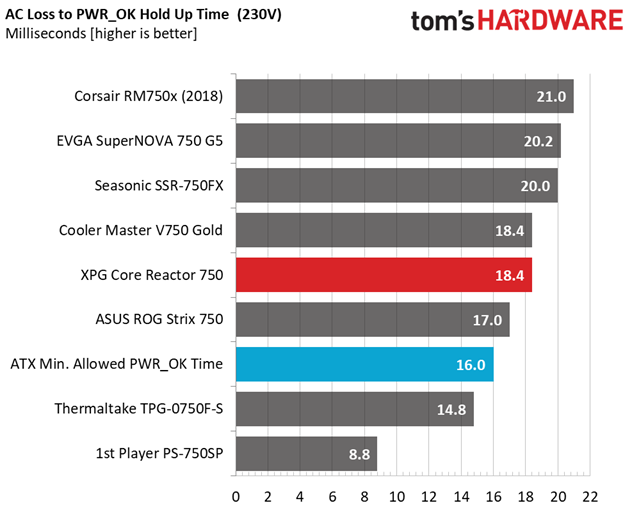
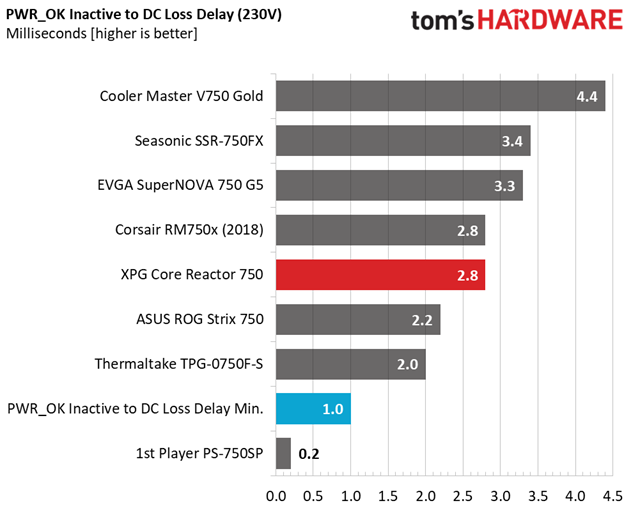
The hold-up time exceeds 21ms, while the ATX spec requires at least 17ms. The power-ok signal is higher than 16ms, and it is accurate since it has a longer than 1ms delay from the PSU's hold-up time.
Inrush Current
Inrush current, or switch-on surge, refers to the maximum, instantaneous input current drawn by an electrical device when it is first turned on. A large enough inrush current can cause circuit breakers and fuses to trip. It can also damage switches, relays, and bridge rectifiers. As a result, the lower the inrush current of a PSU right as it is turned on, the better.
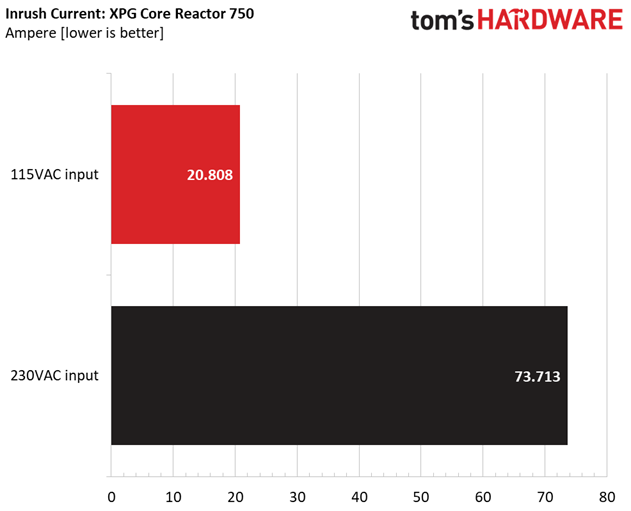
Results 13-14: Inrush Current
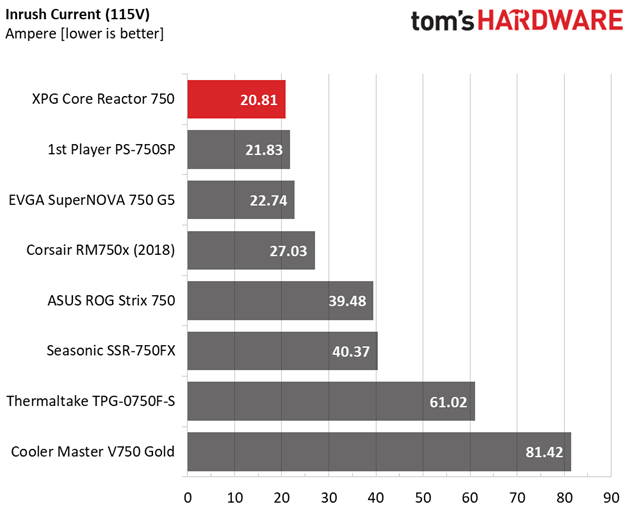
The inrush current is low with 115V, and pretty high with 230V.
Get Tom's Hardware's best news and in-depth reviews, straight to your inbox.
10-110% Load Tests
These tests reveal the PSU's load regulation and efficiency levels under high ambient temperatures. They also show how the fan speed profile behaves under increased operating temperatures.
| Test # | 12V | 5V | 3.3V | 5VSB | DC/AC (Watts) | Efficiency | Fan Speed (RPM) | PSU Noise (dB[A]) | Temps (In/Out) | PF/AC Volts |
| 1 | 4.387A | 1.980A | 1.997A | 0.994A | 74.965 | 85.046% | 637 | 9.3 | 39.61°C | 0.976 |
| 12.164V | 5.052V | 3.304V | 5.031V | 88.146 | 44.54°C | 115.11V | ||||
| 2 | 9.880A | 2.971A | 2.997A | 1.194A | 150.037 | 89.618% | 641 | 9.4 | 40.83°C | 0.988 |
| 12.059V | 5.049V | 3.301V | 5.025V | 167.418 | 46.26°C | 115.11V | ||||
| 3 | 15.680A | 3.469A | 3.501A | 1.395A | 225.050 | 90.961% | 644 | 9.5 | 41.25°C | 0.991 |
| 12.053V | 5.047V | 3.299V | 5.019V | 247.414 | 47.33°C | 115.11V | ||||
| 4 | 21.455A | 3.966A | 4.005A | 1.596A | 300.068 | 91.244% | 647 | 9.5 | 41.76°C | 0.990 |
| 12.065V | 5.045V | 3.297V | 5.013V | 328.865 | 48.64°C | 115.11V | ||||
| 5 | 26.724A | 4.960A | 5.010A | 1.798A | 374.624 | 90.913% | 657 | 9.9 | 42.31°C | 0.990 |
| 12.128V | 5.042V | 3.294V | 5.007V | 412.069 | 49.68°C | 115.11V | ||||
| 6 | 32.140A | 5.953A | 6.017A | 2.000A | 449.531 | 89.917% | 1153 | 25.7 | 42.87°C | 0.991 |
| 12.126V | 5.039V | 3.291V | 5.001V | 499.941 | 50.68°C | 115.11V | ||||
| 7 | 37.607A | 6.951A | 7.026A | 2.203A | 524.870 | 89.296% | 1370 | 30.8 | 43.34°C | 0.992 |
| 12.119V | 5.036V | 3.288V | 4.995V | 587.785 | 51.53°C | 115.10V | ||||
| 8 | 43.072A | 7.953A | 8.034A | 2.406A | 600.187 | 88.605% | 1696 | 37.4 | 43.67°C | 0.992 |
| 12.114V | 5.032V | 3.285V | 4.988V | 677.370 | 52.49°C | 115.10V | ||||
| 9 | 48.900A | 8.453A | 8.529A | 2.407A | 674.703 | 87.957% | 1907 | 40.1 | 44.67°C | 0.993 |
| 12.110V | 5.030V | 3.283V | 4.987V | 767.079 | 54.39°C | 115.10V | ||||
| 10 | 54.529A | 8.954A | 9.052A | 3.019A | 749.908 | 87.207% | 2111 | 42.7 | 45.54°C | 0.994 |
| 12.107V | 5.028V | 3.281V | 4.970V | 859.917 | 56.30°C | 115.10V | ||||
| 11 | 60.753A | 8.956A | 9.055A | 3.020A | 825.131 | 86.519% | 2287 | 45.6 | 46.58°C | 0.995 |
| 12.105V | 5.027V | 3.279V | 4.968V | 953.698 | 57.94°C | 115.09V | ||||
| CL1 | 0.102A | 14.003A | 13.998A | 0.000A | 117.721 | 83.202% | 880 | 17.1 | 42.62°C | 0.986 |
| 12.086V | 5.031V | 3.289V | 5.064V | 141.488 | 50.04°C | 115.12V | ||||
| CL2 | 62.518A | 1.001A | 0.999A | 1.000A | 770.509 | 87.660% | 2088 | 42.5 | 45.21°C | 0.994 |
| 12.111V | 5.043V | 3.292V | 5.017V | 878.977 | 56.00°C | 115.09V |
The PSU's fan operates at low speeds up to the 50% load test, despite the high operating temperatures. Moreover, the power supply doesn't have a problem operating under high loads with increased temperatures for prolonged periods. Nonetheless, such scenarios force the cooling fan to spin at high speeds, where the noise output exceeds 40 dB(A).
20-80W Load Tests
In the following tests, we measure the PSU's efficiency at loads significantly lower than 10% of its maximum capacity (the lowest load the 80 PLUS standard measures). This is important for representing when a PC is idle with power-saving features turned on.
| Test # | 12V | 5V | 3.3V | 5VSB | DC/AC (Watts) | Efficiency | Fan Speed (RPM) | PSU Noise (dB[A]) | PF/AC Volts |
| 1 | 1.242A | 0.494A | 0.499A | 0.198A | 19.990 | 74.821% | 618 | 8.8 | 0.857 |
| 11.951V | 5.056V | 3.307V | 5.051V | 26.717 | 115.10V | ||||
| 2 | 2.481A | 0.989A | 0.999A | 0.397A | 39.979 | 81.011% | 626 | 9.0 | 0.943 |
| 11.961V | 5.054V | 3.306V | 5.045V | 49.350 | 115.10V | ||||
| 3 | 3.666A | 1.481A | 1.498A | 0.595A | 60.012 | 82.863% | 632 | 9.2 | 0.967 |
| 12.160V | 5.053V | 3.305V | 5.041V | 72.423 | 115.10V | ||||
| 4 | 4.881A | 1.979A | 1.999A | 0.794A | 79.964 | 85.497% | 635 | 9.2 | 0.978 |
| 12.162V | 5.052V | 3.304V | 5.036V | 93.528 | 115.10V |
The efficiency levels under light loads are impressive.
2% or 10W Load Test
Intel plans on raising the ante at efficiency levels under ultra-light loads. So from July 2020, the ATX spec will require 70% and higher efficiency with 115V input. The applied load is only 10W for PSUs with 500W and lower capacities, while for stronger units we dial 2% of their max-rated-capacity.
| Test # | 12V | 5V | 3.3V | 5VSB | DC/AC (Watts) | Efficiency | Fan Speed (RPM) | PSU Noise (dB[A]) | PF/AC Volts |
| 1 | 1.064A | 0.244A | 0.246A | 0.051A | 15.005 | 71.572% | 591 | 8.3 | 0.800 |
| 11.937V | 5.054V | 3.307V | 5.053V | 20.965 | 115.10V |
With 2% of its max-rated-capacity, load the unit exceeds 70% efficiency, as the ATX spec will require from July 2020.
Efficiency
Next, we plotted a chart showing the PSU's efficiency at low loads, and loads from 10 to 110% of its maximum-rated capacity. The higher a PSU’s efficiency, the less energy goes wasted, leading to a reduced carbon footprint and lower electricity bills.
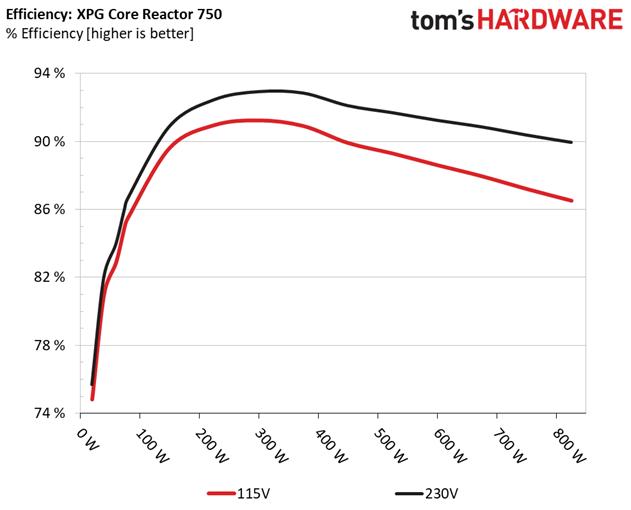
Results 15-18: Efficiency
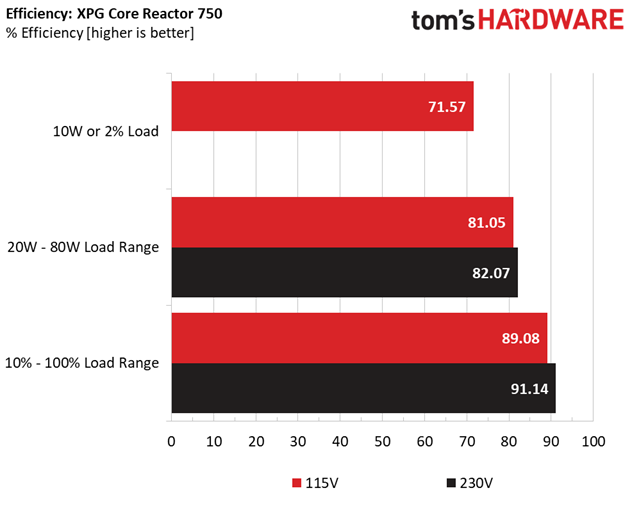
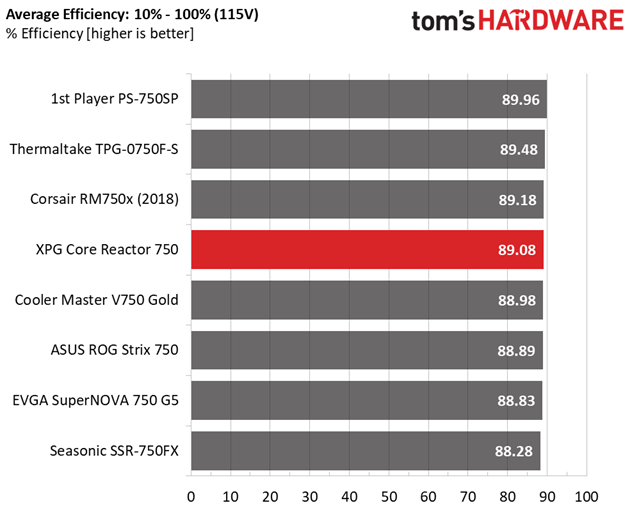
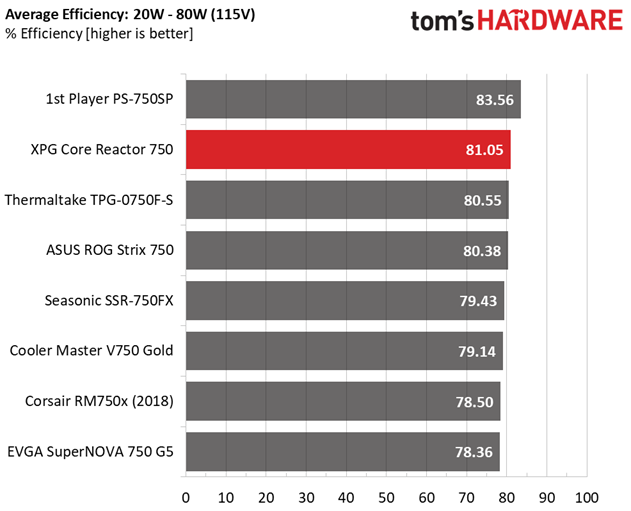
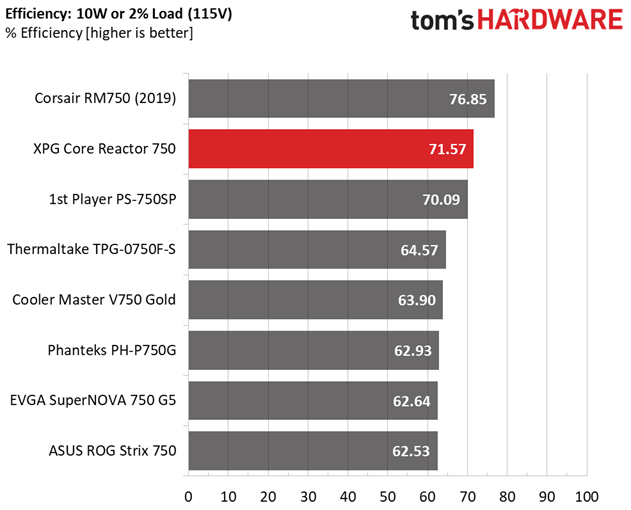
The Core Reactor 750 meets most of the competing offerings with normal loads, while with light and super-light loads it achieves second place.
5VSB Efficiency
| Test # | 5VSB | DC/AC (Watts) | Efficiency | PF/AC Volts |
| 1 | 0.100A | 0.505 | 76.748% | 0.066 |
| 5.053V | 0.658 | 115.10V | ||
| 2 | 0.250A | 1.262 | 78.826% | 0.148 |
| 5.049V | 1.601 | 115.10V | ||
| 3 | 0.550A | 2.773 | 79.661% | 0.265 |
| 5.041V | 3.481 | 115.10V | ||
| 4 | 1.000A | 5.029 | 79.234% | 0.360 |
| 5.029V | 6.347 | 115.10V | ||
| 5 | 1.500A | 7.523 | 79.206% | 0.413 |
| 5.015V | 9.498 | 115.10V | ||
| 6 | 3.000A | 14.921 | 77.884% | 0.478 |
| 4.974V | 19.158 | 115.10V |
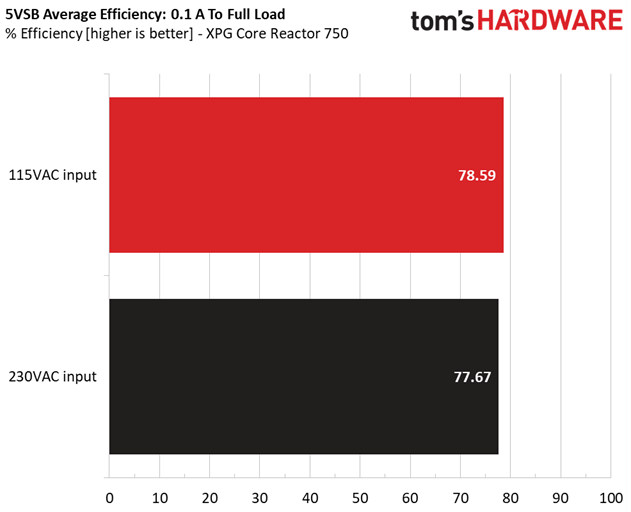
Results 19-20: 5VSB Efficiency
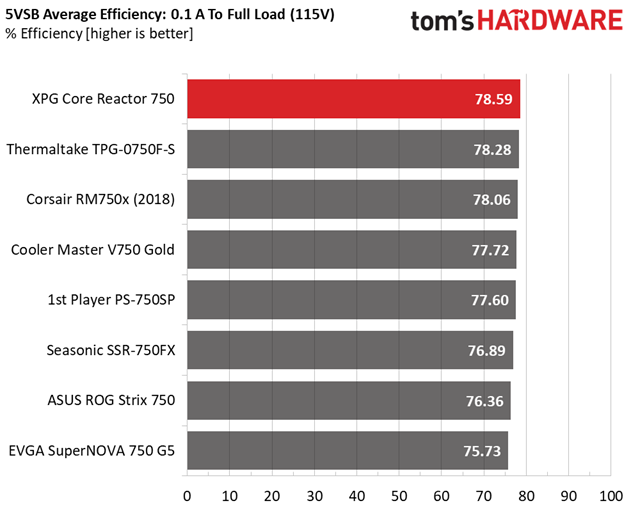
CWT, the OEM of this unit, used one of its "good" 5VSB regulation circuits, so the registered efficiency levels are pretty high.
Power Consumption In Idle and Standby
| Mode | 12V | 5V | 3.3V | 5VSB | Watts | PF/AC Volts |
| Idle | 11.937V | 5.054V | 3.307V | 5.053V | 3.102 | 0.241 |
| 115.1V | ||||||
| Standby | 0.034 | 0.003 | ||||
| 115.1V |
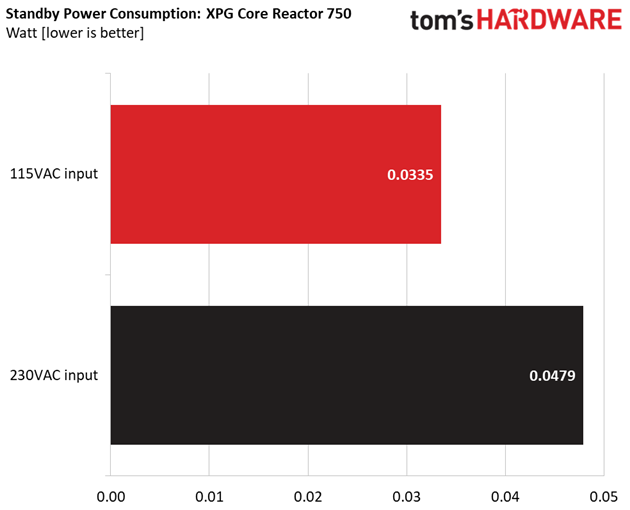
Results 21-22: Vampire Power
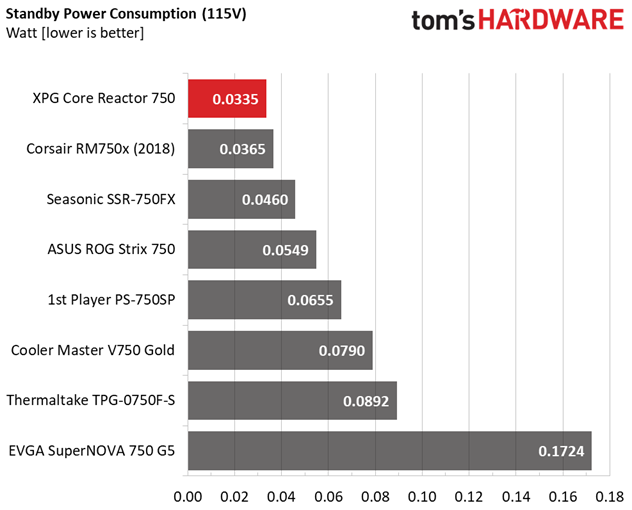
The phantom power levels are dead low, with both voltage inputs.
Fan RPM, Delta Temperature, and Output Noise
All results are obtained between an ambient temperature of 37 to 47 degrees Celsius (98.6 to 116.6 degrees Fahrenheit).
The fan profile at high temperatures is looser compared to the 850W Core Reactor model that we evaluated a while ago. Still, it could be even more relaxed.
The following results were obtained at 30 to 32 degrees Celsius (86 to 89.6 degrees Fahrenheit) ambient temperature.
With up to 410W loads, the PSU is inaudible. It takes more than 560W to exceed 30 dB(A), but in no case does the noise goes over 35 dB(A). If we haven't tested the Corsair RM750x, which is one of the quietest 750W units, we would be highly impressed by this unit's silent operation.
MORE: Best Power Supplies
MORE: How We Test Power Supplies
MORE: All Power Supply Content
Current page: Load Regulation, Hold-Up Time, Inrush Current, Efficiency and Noise
Prev Page Specifications and Part Analysis Next Page Protection Features, DC Power Sequencing, Cross-Load Tests and Infrared Images
Aris Mpitziopoulos is a contributing editor at Tom's Hardware, covering PSUs.
-
Duncan Idaho Thanks for this complete review.Reply
But I think this review fails to catch the point that makes this PSU unique: its depth is only 140mm.
Very few PSUs are able to provide 750W with such shallow depth, and no one does with such a good quality. This is a very rare feat. Cases with little space and most mini-ITX build can benefit from this PSU, I think this should be mentioned.
Corsair RM-X, with >160mm is the main opponent thorough the review. Although It's fair to compare both PSU's, but we should mention what those 20mm extra do for, example, quiet operation. Corsair RM-X is no contender in this... "space" (no pun intended). -
escksu Nay, I don't consider CWT to be the same tier as Seasonic or Superflower. At this price, I rather go for Seasonic. If XPG decides to use Flextronics or Delta, then I am on!!Reply -
reghir Well Amazon is now showing $118.49 making this cheaper than the RM750x , must have read this article :)Reply
10 left as of this posting. Newegg out of stock.
https://www.amazon.com/XPG-Reactor-750Watt-Certified-COREREACTOR750G-BKCUS/dp/B07ZRWYMNW/ref=sr_1_1?keywords=XPG+CORE+Reactor+750Watt+80&qid=1581816551&s=electronics&sr=1-1 -
YuvrajMann Thanks for great review, i just have one question regarding this. can this psu avoid sudden pc restarts on power cuts before switching to ups(switching from mains to ups 15<ms) under load/gaming.Reply -
Aeacus Here's one interesting thing i found about this PSU;Reply
TH review claims it to have 10 years of warranty
Official site says it only has 3 years of warranty, link: http://shop.xpg.com/xpg-core-reactor-atx-power-supply-750w-fully-modular/Moreover, official site doesn't list it's specs either. Just a wall of text as a description. Hard to read description with light grey lettering on white background. -
bignastyid Reply
That's an odd/shady sales site that is not secured. The info from xpg.com shows 10 years and the specs.Aeacus said:Here's one interesting thing i found about this PSU;
TH review claims it to have 10 years of warranty
Official site says it only has 3 years of warranty, link: http://shop.xpg.com/xpg-core-reactor-atx-power-supply-750w-fully-modular/Moreover, official site doesn't list it's specs either. Just a wall of text as a description. Hard to read description with light grey lettering on white background.
https://www.xpg.com/us/xpg/641 -
Aeacus Replybignastyid said:The info from xpg.com shows 10 years and the specs.
On my end, that linked page doesn't exist.
Uh-Oh! Not Found
You’re in the middle of nowhere. The page you requested either was moved or doesn’t exist.
What you can do:
Go back Home page
Contact to me if you believe this happened in error
Also, when going to xpg.com, then selecting XPG -> Official Store, you'll land on the same store i linked in my reply. So, it is legit.
Btw, on xpg.com, i could not find any listing of PSUs. There's plenty of other hardware listed there, but no PSUs. -
bignastyid Reply
On the site under the XPG drop down choose products(not store) , then pc components on the page that comes up you can select PSU.Aeacus said:On my end, that linked page doesn't exist.
Also, when going to xpg.com, then selecting XPG -> Official Store, you'll land on the same store i linked in my reply. So, it is legit.
Btw, on xpg.com, i could not find any listing of PSUs. There's plenty of other hardware listed there, but no PSUs.
